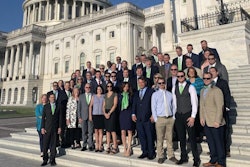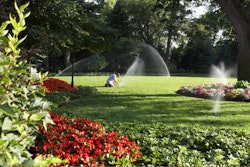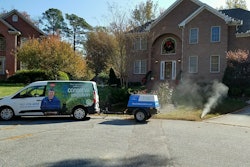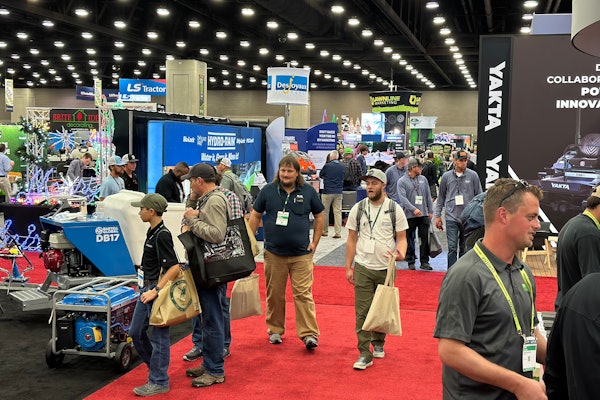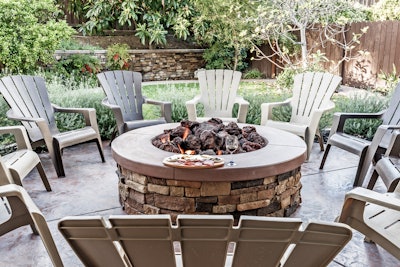
If you’re approaching a new customer who wants a fire feature installed, be sure to take time to educate him/her on the proper safety procedures that come with having a fire feature, as well as possible firescaping principles you can apply to the area.
Safety first and firescaping
People tend to be naturally drawn to beautiful fire features, but it’s always important to exercise caution when around one. According to Outback Landscapes, as long as the following precautions are taken, fire features can prove to be safe and enjoyable.
Fire features, specifically fire pits, should be at least 15 feet away from your customer’s house, other structures and combustible materials like leaves, chemicals and wood. Outback Landscapes recommends placing the fire pit in a space that is open, and always avoid placing them on wooden decks.
According to extension.org, the most critical defensible space in the area is 30 feet closest to a structure. In this area, highly flammable fuels need to be kept to a minimum, and plants such as well-irrigated perennials should be planted here. Other plant suggestions that would do well in this area are non-woody or low-growing deciduous plants.
During weather with extreme wind, avoid lighting the fire pit, as this could cause the embers to spread throughout the yard, and remind customers to always make sure to have a bucket of water, hose or fire extinguisher within reach before lighting the fire.
Outback Landscapes also recommends that customers keep watch on small children near the flames, and they also urge customers to avoid using gasoline to light the fire.
“Keep the flame small,” Outback Landscapes says online. “The larger it is, the bigger chance you have for it to get out of hand.”
Also, be sure to check with local and state burn bans and ordinances before giving your customer the okay to start using their fire feature. Fire pits and fireplaces have to comply with national and local fire codes, and some local ordinances may also have limits on the size of a fireplace and the height of a chimney.
Typically speaking, permits must be pulled and inspections need to be fulfilled for electrical and plumbing, and in some municipalities, fireplaces are considered an accessory-use building that has to comply with all local building codes.
While the term firescaping is typically used when talking about the possibility of wildfires in the area, the basic concept can also work for customers who have fire features. Simply put, firescaping is landscaping or landscaping practices that help protect your customer’s home from fire damages.
“If you are a contractor/installer, you must ensure that your installation is in compliance with all necessary requirements, including referenced codes and standards — which often include manufacturer’s installation instructions,” the National Fire Protection Association (NFPA) states online. “If you are an architect, you must ensure that your plans and specifications are prepared to satisfy the necessary requirements to pass the approval process, including those requirements in the referenced codes and standards.”
Fire pits or a fireplace?
If your customer is still in the process of choosing between a fire pit or a fireplace, take time to sit and talk with him/her about what the expectations are for the feature, how it will be used, and where it will need to be placed before making a decision.
Fire pits are typically more casual and will cost less to build, but if your customer is wanting to try and fill some upward space, fire pits lack any kind of vertical design element and there will be no way to control the smoke.
Fireplaces can not only serve as a nice eye-catching feature in a space, but they can also create a romantic and more formal atmosphere if that’s an idea your customer would be on board with. But keep in mind that they do take up a lot more space than a fire pit, and they only allow customers to sit on one side.
Either feature can be fueled by gas or wood, and the choice will really depend on your client’s personal preference of either the crackling sounds of wood or the ease of use that accompanies natural gas or propane features. Neither feature will really require any kind of extensive winterization process other than covering any gas burners to protect them from the elements.


